Hey All,
Wanted to share with you something that I have been working on for the past 2 days or so. I was poking around my local Gristede's supermarket the other day and found Hodgson Mills Stoneground Rye Flour for $5.99. I usually only go to Gristede's if I'm lazy or desperate as there are much better places to get groceries in NYC. Anyway, I was pleasantly surprised to find what I did. Also, I have some organic spelt berries that I'm trying to get rid of or use as it's not my favorite grain. So, when I got home I consulted Hamelman's Bread book along with the Hofpfisterei München website looking for some inspiration. I found the following. If you click on the links on their website as follows: Sortiment => Natursaurteigbrote => Pfister-Oko-Dinkel-Grunkern-Volkorn... It's a 92% spelt(dinkel) and 8% rye(roggen) bread... I was inspired by this, but did the complete opposite and thought it was a 92% rye bread... Anyways, my inspiration doesn't need to be correct, right?
Anyways, back to the 90% rye/ 10% spelt bread that I'm making. I've tried to make a very detailed photo documentation for all of you. So here goes!
This is what started it all. The Hodgson Mill Rye Flour I found at the local Gristede's around the block from me. $5.99 for 5 pounds. Not a bad find...

My recipe page 1
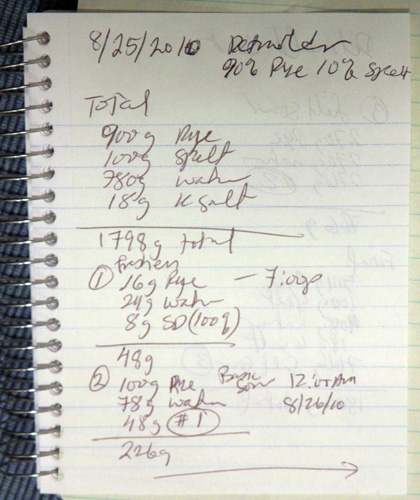
My recipe page 2

8/25/10 - Stage 1 (Freshening)
16g Rye Flour
24g Water
8g Sourdough Starter (100% Hydration)
48g Total
7:00pm - Mix all, cover, let rest for 5 hours.

8/26/10 - Stage 2 (Basic Sour)
100g Rye Flour
78g Water
48g All of stage 1
226g Total
12:00am - Mix all, cover, let rest for approx 17 hours.

Stage 2 after mixing a bit

Stage 2 smoothed over with water before covering and letting rest for 17 hrs.
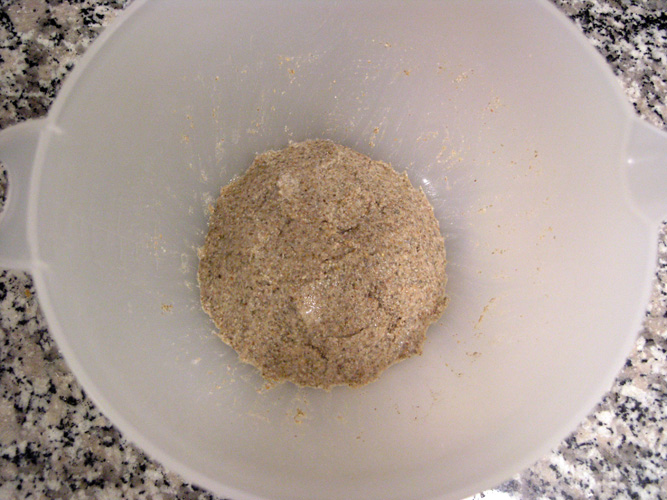
Stage 2 after approx 17 hrs

Stage 2 after approx 17 hrs - detail of what's inside

8/26/10 - Stage 3 (Full Sour)
270g Rye Flour
270g Water
226g All of stage 2
766g Total
6:45pm - Mix all, cover, let rest for approx 3-4 hours

Stage 3 mixed

Stage 3 smoothed over with water before covering and resting

Hand grinding spelt grains for final dough with a hand crank grain mill

Spelt flour close up out of the hand crank mill

Stage 3 after 3 1/2 hrs

Stage 3 side view - gas bubbles

Stage 3 - inside texture
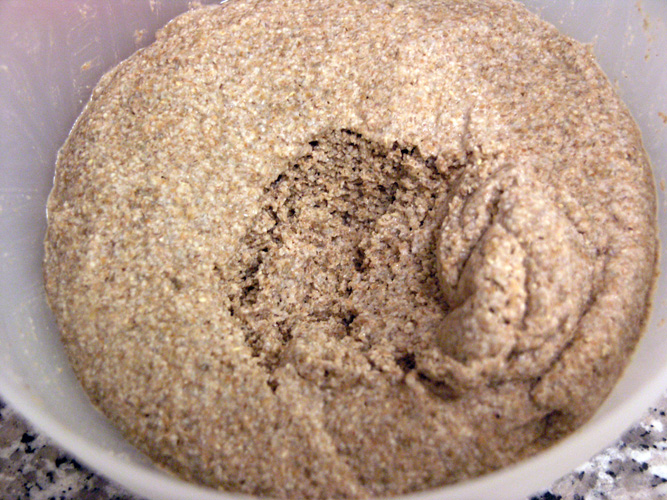
8/26/10 - Final Dough
514g Rye Flour
100g Spelt Flour (freshly ground)
408g Water
18g Kosher Salt
766g All of stage 2
1806g Total
9:15pm - Mix all, cover, bulk ferment for 20 minutes.

Stage 3 in pieces in large mixing bowl with pre-measured amount of water
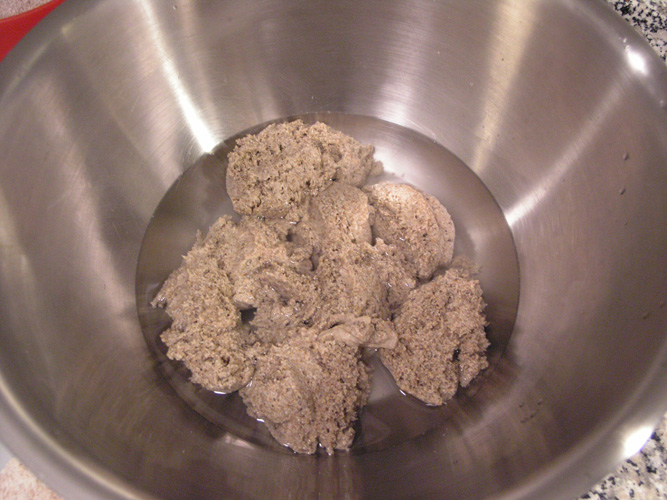
All ingredients of final dough in mixing bowl

Mixing with rubber spatula

More mixing
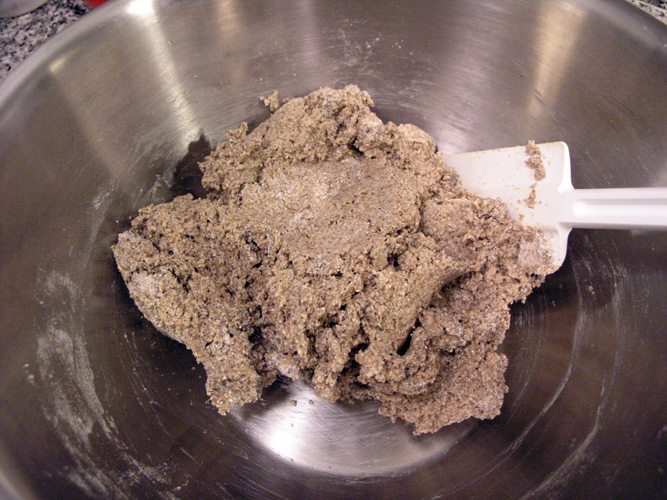
More mixing and mushing... Just mix well so everything is well combined...

For nice ball with spatula, smooth over with water...

Place in plastic bag, bulk ferment for 20 minutes...

Final dough after 20 minute bulk ferment

Inside texture of dough after bulk ferment

9:45pm - Divide dough into 2 equal weight pieces

Form into boule, dusting lightly with rye flour to prevent sticking

Place in linen lined baskets for proofing

Place in baskets in plastic bag for proofing, approx 1 hr. Place baking stone on 2nd rack up from bottom, place steam tray, preheat oven to 550F with convection.

Boules after proofing. Notice cracks on surface.

Close up of cracks
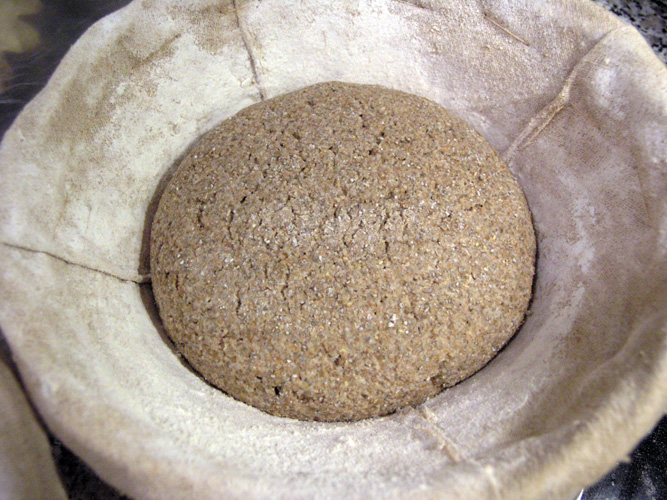
Turn out on to peel

Dock loaf with chopstick

10:50pm - Turn off convection. Place loaves directly on baking stone, add 1 cup water to steam pan, close oven door. Turn oven temp to 500F and bake for 10 minutes without convection. Then remove the steam pan, turn oven down to 410F and bake for another 60 minutes or until internal temp of loaf reaches 205F or more. Sorry for the blurry shot...
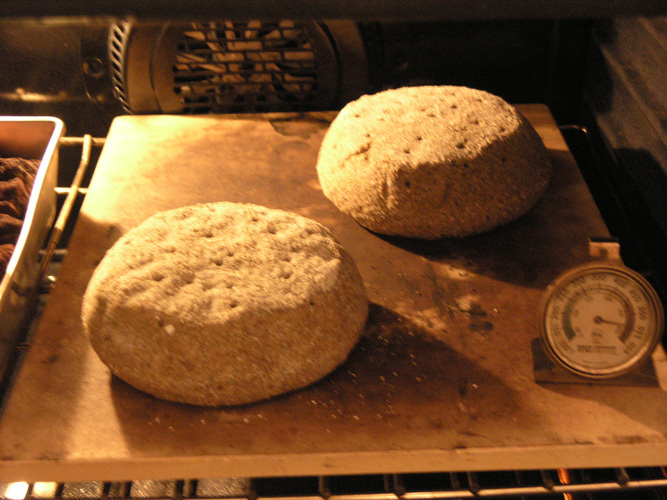
I'm tired... To be continued...
Continuing...
This is about 10 minutes into the bake right before I remove the steam pan. Notice the oven spring...
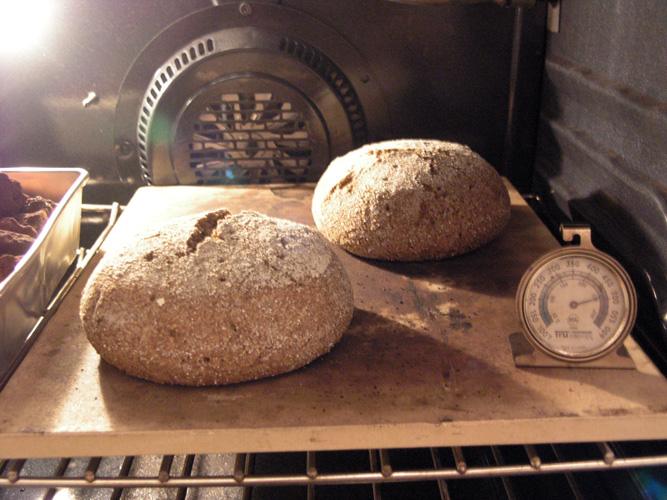
Loaves out of the oven 1 hr after removing the steam pan

Crumbshot!

Thanks for reading... Enjoy!